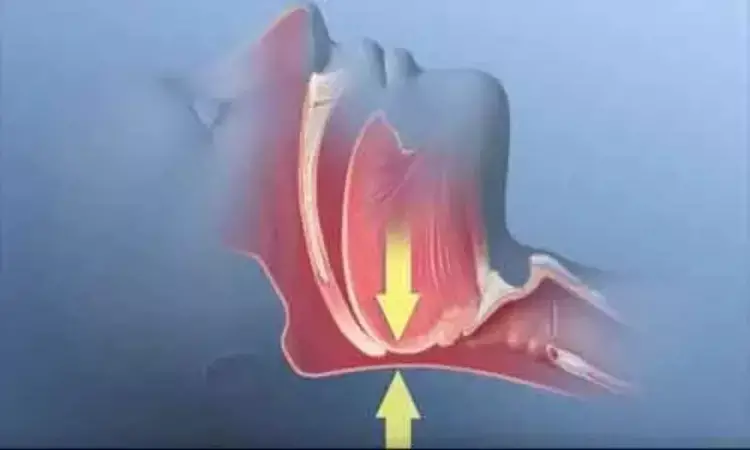- Home
- Medical news & Guidelines
- Anesthesiology
- Cardiology and CTVS
- Critical Care
- Dentistry
- Dermatology
- Diabetes and Endocrinology
- ENT
- Gastroenterology
- Medicine
- Nephrology
- Neurology
- Obstretics-Gynaecology
- Oncology
- Ophthalmology
- Orthopaedics
- Pediatrics-Neonatology
- Psychiatry
- Pulmonology
- Radiology
- Surgery
- Urology
- Laboratory Medicine
- Diet
- Nursing
- Paramedical
- Physiotherapy
- Health news
- Fact Check
- Bone Health Fact Check
- Brain Health Fact Check
- Cancer Related Fact Check
- Child Care Fact Check
- Dental and oral health fact check
- Diabetes and metabolic health fact check
- Diet and Nutrition Fact Check
- Eye and ENT Care Fact Check
- Fitness fact check
- Gut health fact check
- Heart health fact check
- Kidney health fact check
- Medical education fact check
- Men's health fact check
- Respiratory fact check
- Skin and hair care fact check
- Vaccine and Immunization fact check
- Women's health fact check
- AYUSH
- State News
- Andaman and Nicobar Islands
- Andhra Pradesh
- Arunachal Pradesh
- Assam
- Bihar
- Chandigarh
- Chattisgarh
- Dadra and Nagar Haveli
- Daman and Diu
- Delhi
- Goa
- Gujarat
- Haryana
- Himachal Pradesh
- Jammu & Kashmir
- Jharkhand
- Karnataka
- Kerala
- Ladakh
- Lakshadweep
- Madhya Pradesh
- Maharashtra
- Manipur
- Meghalaya
- Mizoram
- Nagaland
- Odisha
- Puducherry
- Punjab
- Rajasthan
- Sikkim
- Tamil Nadu
- Telangana
- Tripura
- Uttar Pradesh
- Uttrakhand
- West Bengal
- Medical Education
- Industry
Obstructive sleep apnea among children tied to higher nasal resistance, lower nasal cavity and nasopharyngeal volume

Obstructive Sleep Apnea Syndrome (OSAS) in children has been a subject of debate regarding its association with increased nasal resistance (NR). A recent study delved into this topic, shedding light on the role of nasal ventilation function (NVF) in children with OSAS. This study sheds light on the potential role of nasal ventilation function (NVF) in the pathogenesis of OSAS in children. This study was published in the Ear, Nose & Throat journal by Ying Pang and colleagues.
The study involved children aged 6 to 12, with a total of 109 children in the OSAS group and 116 in the control group. The participants underwent comprehensive assessments, including polysomnography (PSG) to diagnose OSAS, measurement of NR, and acoustic rhinometry (AR) to evaluate nasal structure and function.
Key Results:
- Higher Nasal Resistance: Children with OSAS exhibited significantly higher nasal resistance compared to the control group, underlining the potential relationship between NR and OSAS in pediatric patients.
- Nasal Structure Differences: The OSAS group demonstrated notable differences in nasal structure compared to the control group. Specifically, they had a smaller nasal minimal cross-sectional area (NMCA), reduced nasal cavity volume (NCV) within the first 5 cm, and decreased nasopharyngeal volume (NPV) in the 6 to 8 cm region.
- Treatment Response: Among the children with mild to moderate OSAS, 84.1% responded positively to a 12-week treatment regimen involving intranasal corticosteroids (ICS) and oral montelukast (OM). Notably, this responsive group showed significant reductions in tonsil and adenoid size, as well as improvements in NR and AR values.
- Partial Improvement: The remaining 15.9% of children did not respond to treatment. However, 26 out of the 32 treated children who exhibited a positive response showed significant improvements in NR, NMCA, and NCV, despite no changes in tonsil and adenoid size or NPV.
The findings suggest that increased nasal resistance and structural differences in the nasal passages may contribute to the development of OSAS in pediatric patients. The positive response to treatment in a significant portion of the children underscores the importance of considering interventions that target nasal ventilation function. In particular, a combination of intranasal corticosteroids and oral montelukast was effective in reducing symptoms and improving NR and AR values in children with mild to moderate OSAS.
This study adds valuable insights to the understanding of OSAS in children and highlights the need for a comprehensive approach to its diagnosis and management, which includes assessing nasal ventilation function.
Reference:
Pang, Y., Xiao, L., Liang, J., Zhang, F., Yao, H.-B., & Shu, Y. Role of nasal ventilation function in obstructive sleep apnea syndrome in children. Ear, Nose, & Throat Journal,2023.https://doi.org/10.1177/01455613231205991
Dr Riya Dave has completed dentistry from Gujarat University in 2022. She is a dentist and accomplished medical and scientific writer known for her commitment to bridging the gap between clinical expertise and accessible healthcare information. She has been actively involved in writing blogs related to health and wellness.
Dr Kamal Kant Kohli-MBBS, DTCD- a chest specialist with more than 30 years of practice and a flair for writing clinical articles, Dr Kamal Kant Kohli joined Medical Dialogues as a Chief Editor of Medical News. Besides writing articles, as an editor, he proofreads and verifies all the medical content published on Medical Dialogues including those coming from journals, studies,medical conferences,guidelines etc. Email: drkohli@medicaldialogues.in. Contact no. 011-43720751


